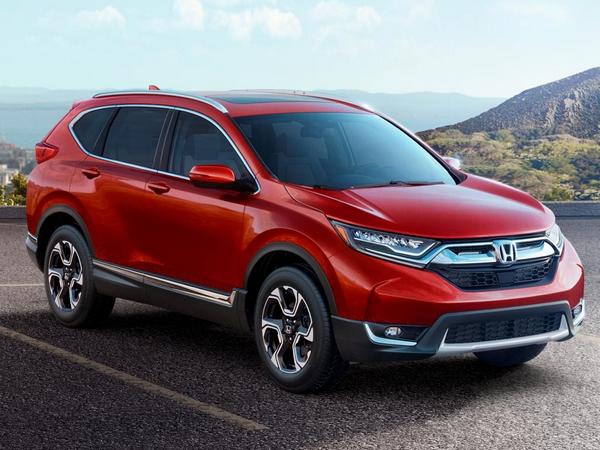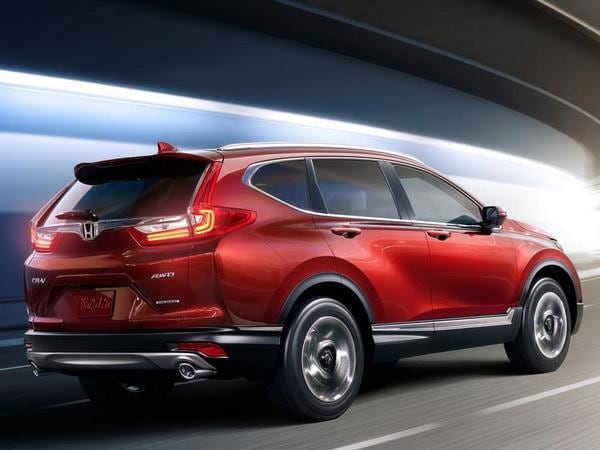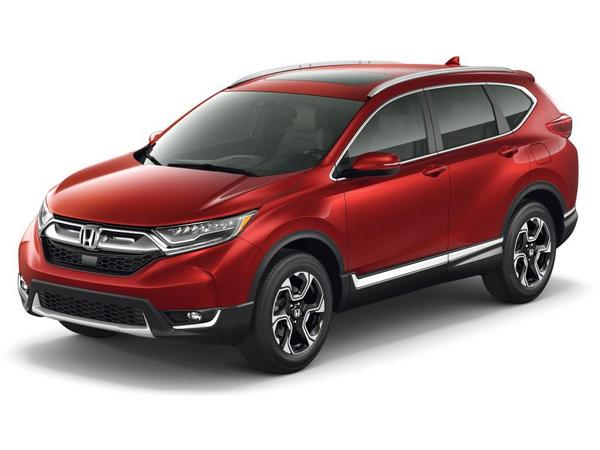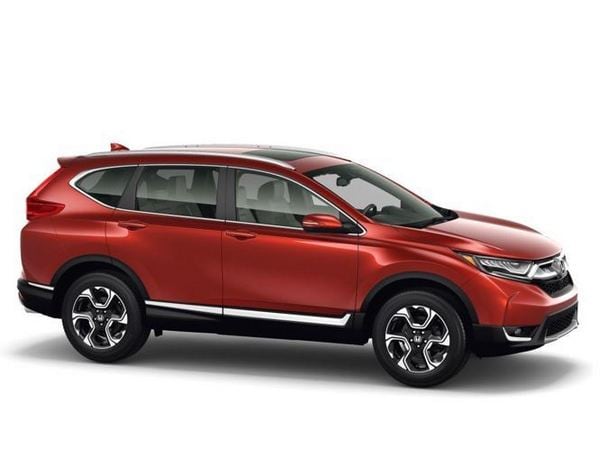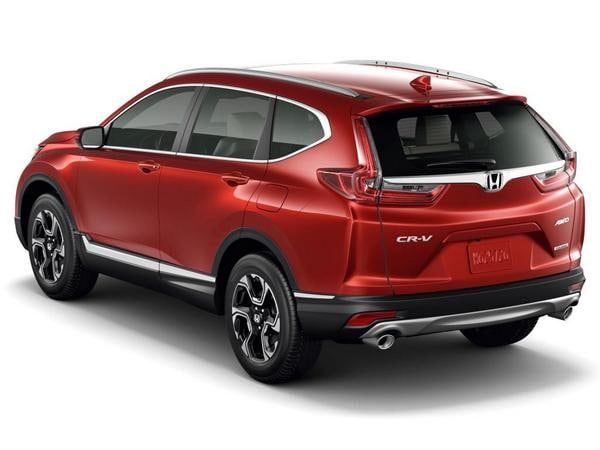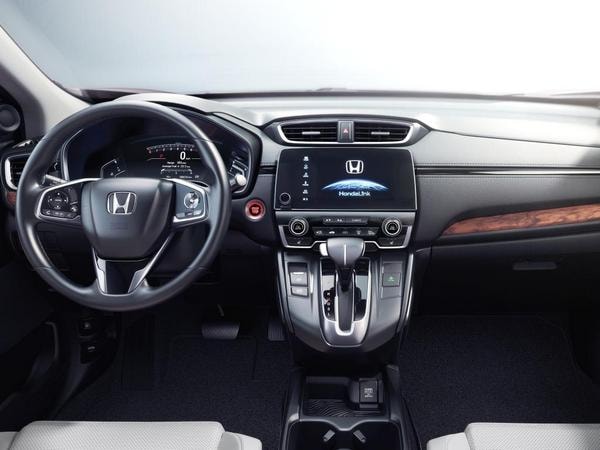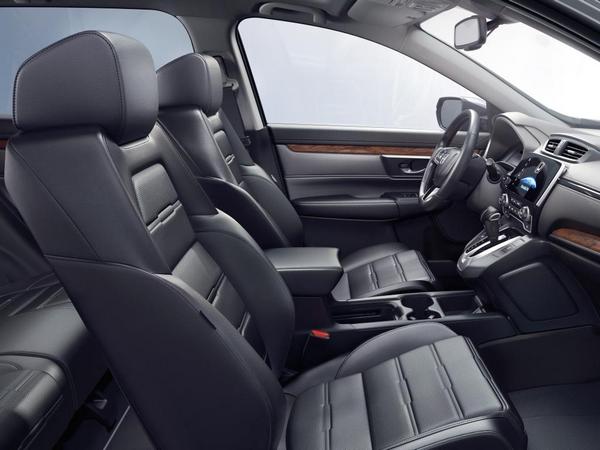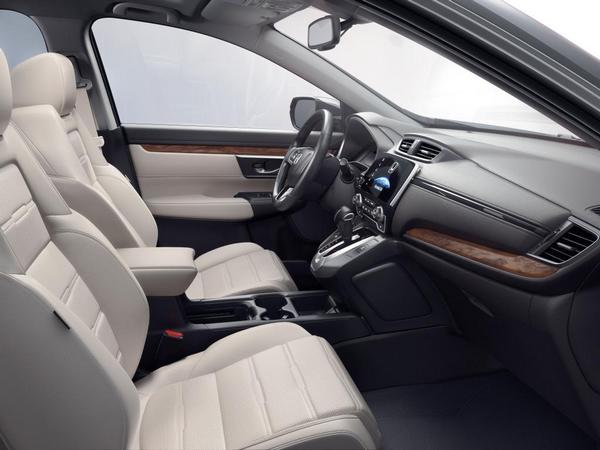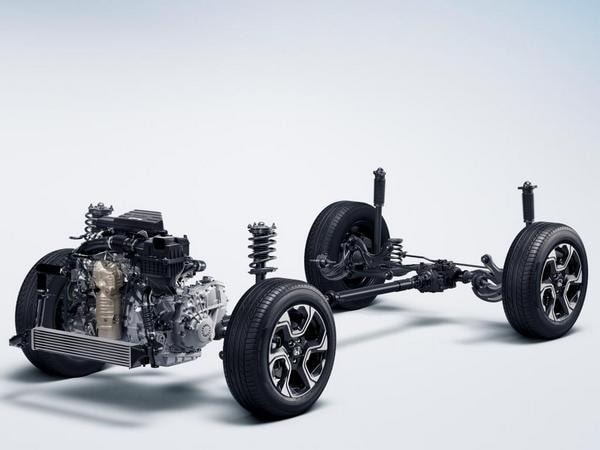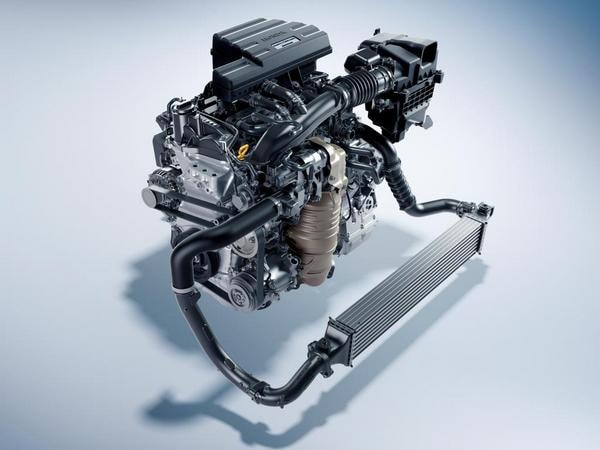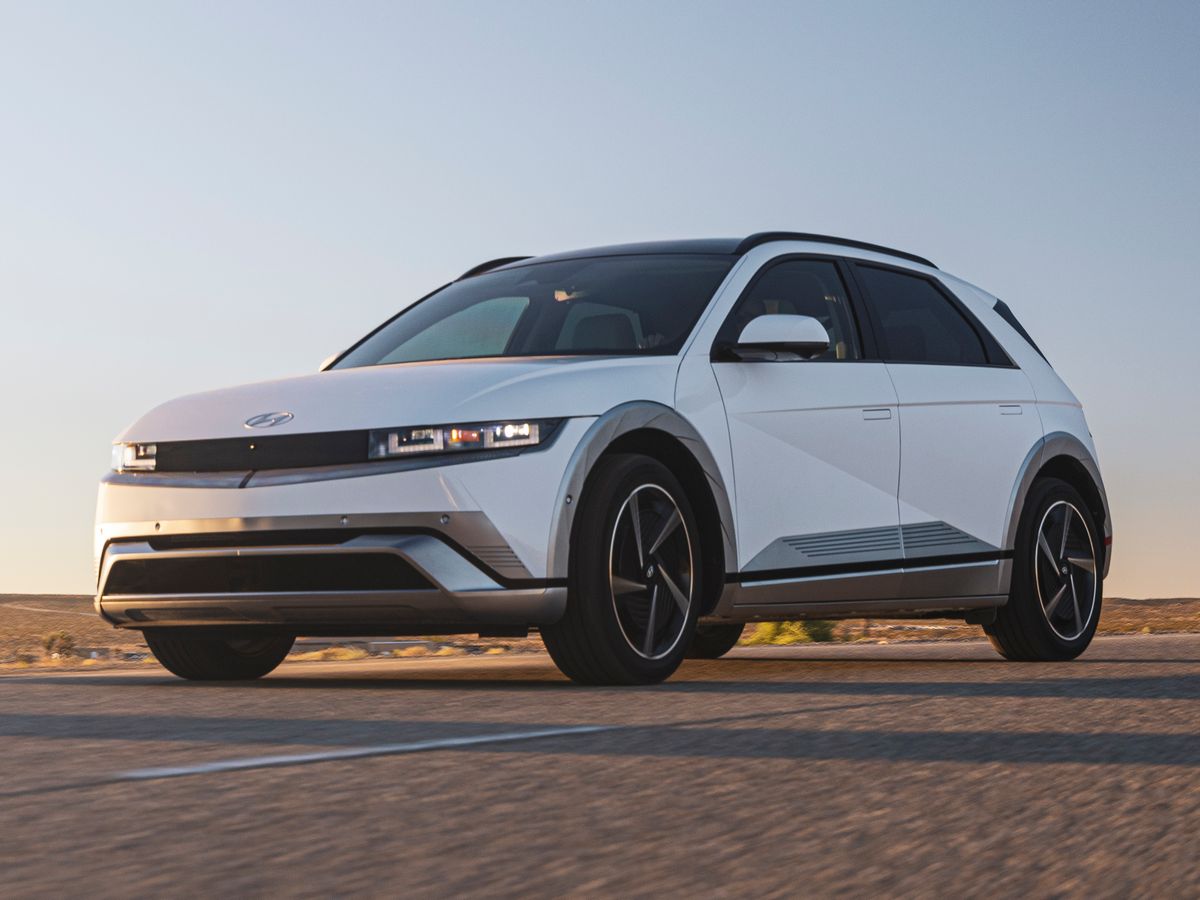Extensively freshened just two years ago, Honda’s CR-V will roll into showrooms late this year as an all-new vehicle for the 2017 model year. One of America’s bestsellers since its introduction as a 1998 model, the fifth generation CR-V represents a comprehensive redesign that can be summarized with one word: more. More power, room and features.
Like most new crossover SUVs, the latest CR-V continues to expand the segment’s physical boundaries. It’s bigger in every dimension. The wheelbase increases by 1.6 inches, to 104.7. Overall length stretches from 179.4 to 180.6 inches, width expands from 71.6 to 73.0 inches, and at 66.1 inches (66.5 with all-wheel drive) height is up 1.8 inches.
You’d expect these dimensional increases to affect the CR-V’s mass—2016 curb weights run from 3358 to 3624 pounds, according to company stats—but that’s not the case. The range goes from 3307 pounds for a basic front-drive model to 3512 for a loaded top-of-the-line Touring trim with all-wheel drive. And the collective effect on interior volume is both predictable and positive. This is most visible, and appreciated, in the rear seat area, where legroom expands to 40.4 inches from 38.3.
And of course there’s room for more stuff—39.2 cubic feet behind the rear seat, a gain of two cubic feet. Oddly, for a production-ready vehicle, Honda wasn’t ready to furnish a max capacity specification. With the rear seats folded, the current CR-V can swallow almost 80 cubic feet. Expect the new CR-V to accommodate more.
Also: Class of 2017 – New Cars Ready to Roll
Power Boost
More muscle. The CR-V’s base engine for 2017 will be the same 2.4-liter 4-cylinder that was standard for all models in 2016: 184 horsepower, 180 pound-feet of torque. However, the naturally aspirated 2.4 will be limited to the basic LX trim. Higher trims will be propelled by a turbocharged 1.5-liter 4-cylinder adapted from the Honda Civic.
In CR-V tune it huffs up 190 hp and 179 lb-ft, up 16 hp and 17 lb-ft from Civic spec. Those output numbers may not seem to give the turbo engine a big advantage over the naturally aspirated 2.4-liter, but its broad torque plateau—max torque from 2000 to 5000 rpm—makes it more flexible than the non-turbo, which peaks at 3900 rpm.
As with the current CR-V, a continuously variable transmission (CVT) will transmit propulsion to the front or all four wheels. EPA fuel economy ratings weren’t available at the Detroit reveal. The 2016 CR-V, with its 2.4-liter engine, was projected to achieve 27 mpg in the city, 34 highway.
Also: Kelley Blue Book Best Buy Awards of 2016
Sleek and Athletic
Restyling a bestseller is a job to be approached with caution, so it’s not surprising that the fifth generation CR-V doesn’t look vastly different from its immediate predecessor. Still sleek, by the standards of this two-box class of vehicles, with more LED lighting, and character lines running from front to rear, to avoid a slab-sided appearance. The proportions disguise its expanded dimensions, but the added width and wider track give the latest CR-V a more hunkered-down, athletic look.
Inside, there’s the catalogue of upgraded materials and features we’ve come to expect of any major makeover, amplified by the luxury of more room, not only fore and aft but side to side as well.
As with the current generation, the 2017 CR-V will be offered in four trim levels—LX, EX, EX-L, and Touring. Standard feature content has been enhanced, particularly in the top three trims which include the Hondasensing driver assist features as standard equipment.
A couple of new details merit mention. The first is the addition of a hands-free power liftgate that opens by swiping a foot beneath the rear bumper, a la the Ford Escape.The other update is the addition of a radio tuning knob to the center dash control array, a response to widespread carping about Honda’s fixation with touch-screen controls.
The 2017 Honda CR-V will go on sale in late fall. Pricing will range from $24,945 for a front-drive CR-V LX model to $34,595 for an AWD CR-V Touring variant.
